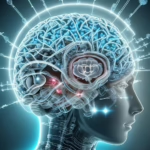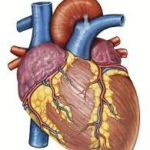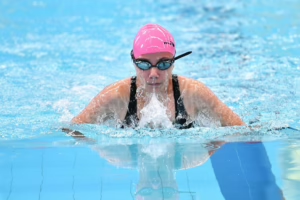The Art and Science of Physics: How Creativity Fuels Innovation
Introduction
Physics often appears as a field governed solely by mathematics and empirical data, yet beneath its rigorous surface lies an intricate landscape of creativity and artistry. The tension between art and science has long fascinated thinkers, prompting them to ponder how creative thought drives the advancements observed in modern physics. Understanding physics as both an art and a science can provide a holistic perspective on how groundbreaking ideas emerge, leading to innovations that have the potential to reshape our world.
The Dual Nature of Physics
The Analytical Framework of Physics
At its core, physics seeks to describe the fundamental principles governing the universe. From Newton’s laws of motion to quantum mechanics’ probabilistic nature, physics relies heavily on mathematical formulations and empirical evidence. This detailed, analytical side is crucial, for it provides a structured framework through which we can understand and quantify reality. It is in this domain that we find the rigor of scientific methodology, observational experiments, and the testing of hypotheses.
The Artistic Essence of Physics
However, physics is also heavily imbued with creativity. Many of the most revolutionary theories in physics – such as Einstein’s theory of relativity or the wave-particle duality of light – were born from imaginative insights rather than stark empirical data alone. Creativity in physics manifests in the formation of hypotheses, models, and analogies that help in conceptualizing complex phenomena. This interplay between creativity and analysis reveals an art form that is not often recognized in the traditional study of physics.
Historical Perspectives: Creativity in Physics
Through history, many physicists have successfully intertwined creativity with empirical investigation. For instance, Albert Einstein famously referred to creativity as being at the heart of his intuitive grasp of theoretical physics. His thought experiments, such as imagining riding alongside a beam of light, embody this creative approach. These imaginative leaps allowed Einstein to conceptualize relativity in a way that had never been entertained before, all while adhering to rigorous mathematical underpinnings.
Similarly, Richard Feynman, known for his lectures and charismatic personality, embraced creativity in his approach to physics. Feynman’s diagrams revolutionized how particles and their interactions were visualized, exhibiting that visual might inspire deeper understanding. By breaking free from conventional methods of representation, Feynman harnessed creativity to foster a more profound grasp of quantum electrodynamics.
The Role of Creative Thinking in Scientific Discovery
The Process of Innovation
Innovation in physics tends to follow a distinctive path that showcases the interplay between creativity and structured thought. Scientific progression is often not linear; it embodies cycles of hypothesis generation, experimentation, failure, and redesign. This iterative process requires not just analytical skills but also a creative mindset that embraces uncertainty and fosters exploration.
For instance, consider the realm of materials science where physicists aim to develop new materials with extraordinary properties. The quest often begins with a creative vision – a hypothetical material capable of achieving specific functionalities – and proceeds through a rigorous process of experimentation and validation. Innovators like Andre Geim and Konstantin Novoselov, who discovered graphene, exhibited a perfect blend of inventive thinking coupled with meticulous experimental work. Their initial ideas were born from lateral thinking about how different materials could be manipulated on a nano scale, leading to one of the most revolutionary materials in recent decades.
The Importance of Interdisciplinary Collaboration
Creativity in physics often flourishes at the intersection of disciplines. Many contemporary breakthroughs stem from collaboration between physicists, engineers, biologists, and artists. This synergy cultivates a fertile ground for innovation, allowing for diverse perspectives to converge.
Take the field of quantum computing as an example. Researchers in physics, computer science, and material science are working together to build systems capable of harnessing quantum bits or qubits. The creative fusion of ideas from various domains is vital for overcoming monumental challenges, such as error correction, coherence time, and scalability in these nascent technologies.
Teaching Physics: Cultivating Creativity
The Challenge in Education
Traditional education systems often emphasize rote learning and standardized testing, potentially stifling creativity in students aspiring to pursue physics. By prioritizing memorization of formulas and procedures over deeper conceptual understanding, students may become disengaged and dispassionate about the subject.
A New Pedagogical Approach
To combat this, educators must reformulate their teaching methodologies. Incorporating problem-based learning, hands-on experiments, and interdisciplinary projects can nurture creative thinking in students. Inviting students to tackle open-ended questions, rather than merely solving predefined problems, allows them to explore their interests and develop a genuine connection to the material.
Programs that integrate art into physics education can also inspire students. Collaborations with artists to visualize complex ideas in physics can enhance learning experiences, making abstract concepts more tangible and relatable. The intersection of creativity and education in physics not only enriches student understanding but also cultivates future innovators.
Modern Innovations: The Creative Future of Physics
The Rise of Artificial Intelligence
Artificial Intelligence (AI) represents one of the most significant innovations influenced by the creative spirit of physics. While AI itself relies on mathematical models and data analysis, its potential fully emerges through creative applications in diverse fields. For example, AI is being utilized to explore complex physical systems that are traditionally challenging to analyze.
In high-energy particle physics, AI algorithms sift through vast amounts of data generated by particle collisions at facilities like CERN. Researchers employ creative approaches in algorithm design, enabling machines to recognize patterns and make predictions faster than humanly possible. This heightens the efficiency of discovery in particle physics, revolutionizing our understanding of fundamental forces and particles.
Exploration of the Universe
Cosmology and astrophysics have also witnessed the infusion of creative paradigms facilitated by advanced technology. Telescopes equipped with novel imaging techniques, such as the Event Horizon Telescope, allow us to visualize celestial phenomena that were once confined to imagination alone. The pioneering efforts involved in the capture of the first image of a black hole exemplify the blend of creativity, technology, and science, merging artistic vision with scientific inquiry.
In the realm of theoretical physics, innovative hypotheses such as string theory or loop quantum gravity arise from deeply imaginative frameworks attempting to unify disparate forces into a single conceptual paradigm. These ideas push the boundaries of what we understand, inviting future generations of physicists to grapple with questions that blend the realms of science and human experience.
The Interplay of Ethics and Creativity
The Responsibility of Innovators
As innovation proceeds at a rapid pace in the field of physics, ethical considerations, and the application of creative ideas must be scrutinized. The development of new technologies can often outpace moral frameworks, leading to challenges that require imaginative solutions. Creative problem-solving is integral to navigating the ethical landscape associated with advancements like artificial intelligence, biotechnology, and quantum technologies.
Creative Approaches to Ethical Dilemmas
To address these ethical concerns, an interdisciplinary approach that includes ethicists, scientists, artists, and policymakers is vital. By encouraging dialogues incorporating multiple perspectives, we can foster inclusive creativity that guides responsible innovation. Workshops, think tanks, and public forums can facilitate conversations around the moral implications of scientific advancements, cultivating a sense of accountability among innovators.
Conclusion: Embracing the Fusion of Art and Science
The realms of art and science are often erroneously portrayed as distinct entities; however, in the context of physics, they are irrefutably intertwined. Creativity fuels the intellectual fire that drives inquiry, innovation, and applied science. As we expand our horizons in physics, acknowledging this symbiosis can guide future generations toward a richer understanding of our universe.
Cultivating creativity in education, advancing interdisciplinary collaboration, and responsibly navigating ethical dilemmas are all essential elements for harnessing this dynamic. Embracing the art inherent in physics not only enriches our understanding but also paves the way for revolutionary innovations that could transform our world for generations to come.
By championing both the analytical and the artistic aspects of this discipline, we ignite the potential for more imaginative, profound, and innovative breakthroughs in our quest to fathom the cosmos’ secrets.
Footnotes
[1] G. L. (2018). The Role of Creativity in Physics Education. International Journal of Science Education.
[2] Feynman, R. (2017). The Feynman Lectures on Physics. Basic Books.
[3] Geim, A., & Novoselov, K. (2004). "The rise of graphene." Nature Materials.
[4] Shapiro, S. (2014). Artificial Intelligence and the Future of Computing. Technology Futures.
[5] Einstein, A. (1950). "The World As I See It". Philosophical Library.
This outline strategically frames the rich interplay between creativity and physics, providing a holistic perspective essential for nurturing future innovations in both domains.


























Add Comment